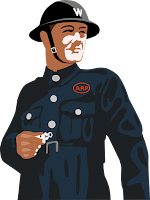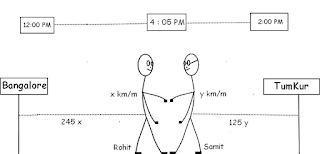Puzzle : Ants Walk on a Stick
Twenty-five ants are placed randomly on a meter stick.
Each faces east or west. At a signal they all start to march at 1
centimeter per second. Whenever two ants collide they reverse
directions. How long must we wait to be sure that all the ants have left
the stick?
This sounds immensely complicated, but with a simple insight the answer is immediately clear. What is it?
You need to wait for.....seconds only!
This sounds immensely complicated, but with a simple insight the answer is immediately clear. What is it?
You need to wait for.....seconds only!














